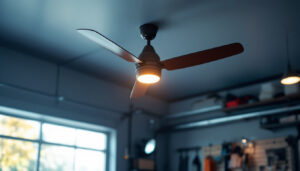

As the demand for energy-efficient lighting solutions continues to rise, LED light bulbs have become a staple in the lighting industry. For lighting contractors, understanding the nuances of LED technology is crucial not only for delivering quality installations but also for ensuring customer satisfaction. This article outlines the essential do’s and don’ts that every lighting contractor should keep in mind when working with LED light bulbs.
LED lighting offers numerous benefits that make it an attractive option for both contractors and clients. Understanding these advantages can help contractors advocate for LED solutions more effectively.
One of the most significant advantages of LED lights is their energy efficiency. Compared to traditional incandescent or fluorescent bulbs, LEDs consume considerably less power while providing the same or even greater light output. This efficiency translates into lower energy bills for clients, making it an appealing selling point.
Moreover, the reduced energy consumption contributes to a smaller carbon footprint, aligning with the growing trend towards sustainability in the construction and renovation sectors. As more clients become environmentally conscious, the shift towards energy-efficient solutions like LEDs not only meets their demands but also enhances the contractor’s reputation as a forward-thinking professional committed to eco-friendly practices.
LED light bulbs boast a longer lifespan than traditional lighting options, often lasting up to 25,000 hours or more. This longevity means fewer replacements and maintenance visits for contractors, which can lead to increased customer satisfaction and loyalty.
Additionally, the durability of LEDs makes them suitable for various applications, including residential, commercial, and industrial settings. Contractors can confidently recommend LEDs for both indoor and outdoor use, knowing they will withstand various environmental conditions. The robust nature of LED technology also means they are less prone to breakage, which is particularly beneficial in high-traffic areas or spaces exposed to the elements. This resilience not only reduces long-term costs associated with replacements but also minimizes disruptions for clients, allowing them to enjoy consistent lighting without frequent interruptions.
Furthermore, the versatility of LED lighting extends beyond mere durability. With advancements in technology, LEDs now come in a variety of colors and styles, enabling contractors to create customized lighting solutions that enhance the aesthetics of any space. Whether it’s warm white light for a cozy home atmosphere or vibrant colors for commercial displays, the adaptability of LED lighting can cater to diverse client preferences and project requirements.
To maximize the benefits of LED lighting and ensure successful installations, contractors should adhere to several best practices. These do’s will help in delivering quality service and enhancing client relationships.
Education is key when it comes to LED lighting. Many clients may not be aware of the different types of LEDs available, including color temperatures, brightness levels, and fixture compatibility. By taking the time to explain these options, contractors can help clients make informed decisions that best suit their needs.
Providing samples or visual aids can also enhance understanding, allowing clients to see the differences between warm and cool white light or the impact of various lumens on a space.
When selecting LED bulbs, it is essential to consider the specific application. Different environments may require different types of lighting. For instance, a retail store may benefit from brighter, cooler lighting to enhance product visibility, while a residential space might call for warmer tones to create a cozy atmosphere.
Understanding the intended use of the space will guide the selection process, ensuring that the chosen LEDs meet both aesthetic and functional requirements.
The LED lighting industry is continually evolving, with new technologies and products emerging regularly. Contractors should make it a priority to stay informed about the latest advancements, such as smart LED options that can be controlled via mobile devices or integrated into home automation systems.
Attending trade shows, participating in webinars, and subscribing to industry publications can provide valuable insights into new products and trends, helping contractors remain competitive in the market.
While there are many do’s to follow, there are also critical pitfalls to avoid. Recognizing these don’ts can help contractors maintain professionalism and deliver high-quality services.
One common mistake is neglecting the compatibility of LED bulbs with existing fixtures and dimmer switches. Not all LEDs are designed to work with dimmers, and using incompatible products can lead to flickering, buzzing, or even damage to the bulb.
Contractors should always check compatibility before making recommendations or installations. This attention to detail can prevent potential issues and ensure a seamless lighting experience for clients.
Color temperature plays a crucial role in the overall ambiance of a space. Contractors should avoid the mistake of assuming that all clients prefer the same color temperature. Some may prefer a warm, inviting glow, while others may opt for a cooler, more clinical light.
Discussing color temperature preferences with clients can help in selecting the right bulbs for their specific needs, enhancing the overall satisfaction with the lighting solution.
In the fast-paced world of contracting, it can be tempting to rush through installations to maximize productivity. However, taking the time to ensure proper installation is vital for the longevity and performance of LED lighting systems.
Contractors should adhere to best practices, including following manufacturer guidelines and ensuring proper wiring and fixture alignment. A careful installation process will minimize the risk of future issues and reinforce the contractor’s reputation for quality work.
Familiarity with LED specifications is essential for contractors to make informed decisions and recommendations. Knowledge of these specifications can significantly impact the quality of the lighting solutions provided.
Traditionally, light bulbs were rated by wattage, which indicated energy consumption. However, with LEDs, the focus has shifted to lumens, which measure light output. Contractors should educate clients on this distinction, helping them understand that higher lumens equate to brighter light, regardless of wattage.
For example, a 10-watt LED bulb can produce the same amount of light as a 60-watt incandescent bulb, making it essential to emphasize the energy savings associated with LED technology.
The Color Rendering Index (CRI) is another important specification that contractors should consider. CRI measures how accurately a light source displays colors compared to natural light. A higher CRI rating (close to 100) indicates better color accuracy, which is particularly important in settings like art galleries or retail spaces where color perception is crucial.
Contractors should be aware of the CRI ratings of the LED products they recommend, ensuring that clients receive lighting solutions that meet their specific needs.
Despite the growing popularity of LED lighting, several misconceptions persist in the market. Addressing these misconceptions can help contractors better inform their clients and dispel any doubts about LED technology.
One common misconception is that LED bulbs are prohibitively expensive. While it is true that the initial cost of LED bulbs may be higher than traditional options, the long-term savings on energy bills and replacement costs often outweigh this initial investment. Contractors should highlight the total cost of ownership to clients, emphasizing the financial benefits over time.
Another misconception is that LED lights do not provide sufficient brightness. This belief often stems from early LED technology, which may not have offered the same brightness levels as incandescent bulbs. However, modern LEDs are available in a wide range of brightness levels, making them suitable for various applications.
Contractors should educate clients about the advancements in LED technology, reassuring them that they can achieve the desired brightness for any space.
The LED lighting industry is constantly evolving, with new trends shaping the future of lighting solutions. Staying informed about these trends can help contractors remain competitive and provide cutting-edge solutions to clients.
Smart lighting technology is on the rise, allowing users to control their lighting through mobile apps or voice-activated devices. This trend offers convenience and energy savings, as users can adjust their lighting based on their preferences and schedules.
Contractors should familiarize themselves with smart LED products and their installation requirements, as this knowledge will enable them to offer clients innovative solutions that enhance their living or working environments.
As sustainability becomes increasingly important, the demand for eco-friendly lighting solutions is growing. Contractors should consider incorporating sustainable practices into their work, such as using recyclable materials and promoting energy-efficient products.
By aligning with sustainability goals, contractors can appeal to environmentally conscious clients and position themselves as leaders in the industry.
LED light bulbs offer a wealth of opportunities for lighting contractors, but success in this field requires a thorough understanding of the technology and best practices. By adhering to the do’s and don’ts outlined in this article, contractors can enhance their service quality, educate clients effectively, and stay ahead in the competitive lighting market.
As the industry continues to evolve, staying informed about trends and advancements will be crucial for contractors looking to thrive in the world of LED lighting. Embracing these changes not only benefits contractors but also leads to happier, more satisfied clients who appreciate the value of modern lighting solutions.
Ready to elevate your lighting projects with the most efficient LED solutions on the market? LumenWholesale is here to support you every step of the way. Our commitment to quality and affordability ensures you have access to the best spec-grade lighting products at wholesale prices that simply can’t be beaten. Say goodbye to middleman markups and hello to a vast selection of reliable, high-performance lighting that meets the highest industry standards. Plus, with free shipping on bulk orders, you can stock up on premium lighting without worrying about hidden fees. Don’t compromise on quality or cost—choose LumenWholesale for the perfect blend of value and convenience. Wholesale Lighting at the Best Value is just a click away.

Discover essential insights into architectural round pendant lights tailored for lighting contractors.

Discover how 4ft LED lights are revolutionizing the lighting industry for contractors.

Discover essential insights for lighting contractors navigating the evolving landscape of smart home automation.

Discover the insider tips and expert techniques lighting contractors use to flawlessly replace canister lights.
Get notified when NEW deals are released.
Optimize your budget with wholesale discounts.
Only top-quality, specification-grade lighting products.
No additional costs at checkout - what you see is what you pay.
We understand the unique needs of contractors.